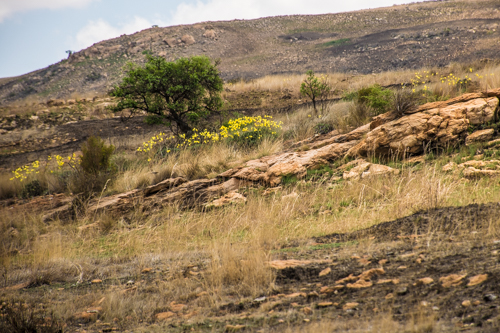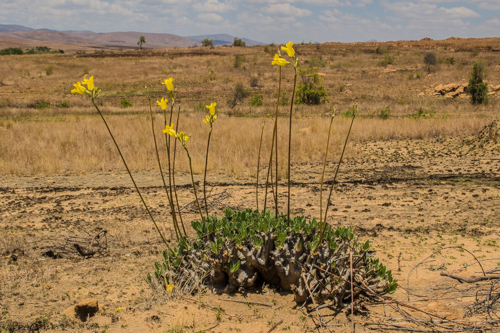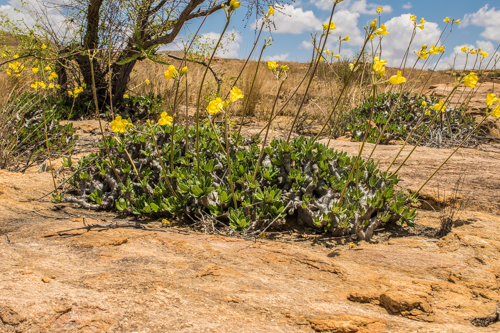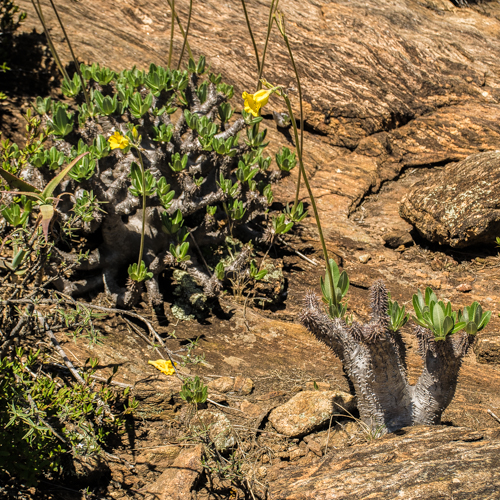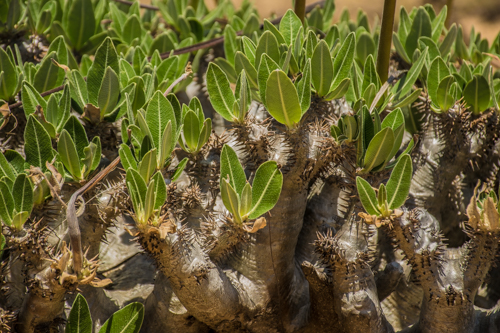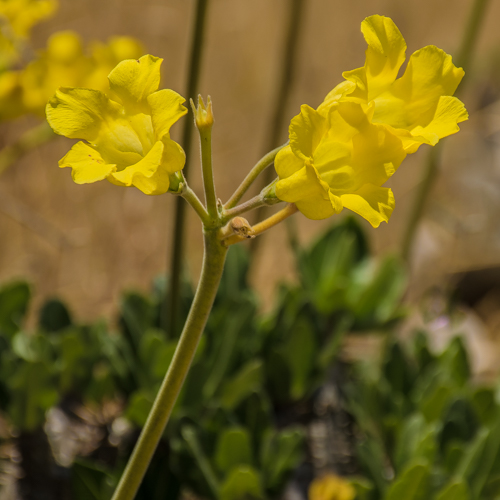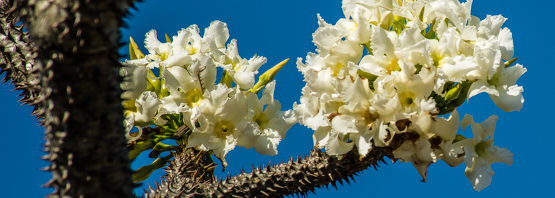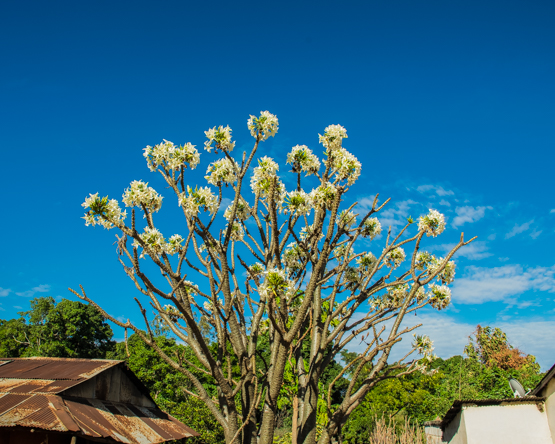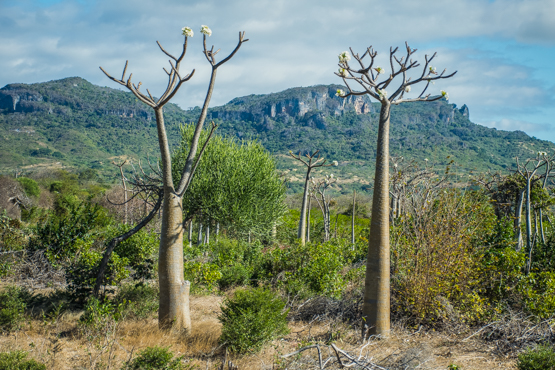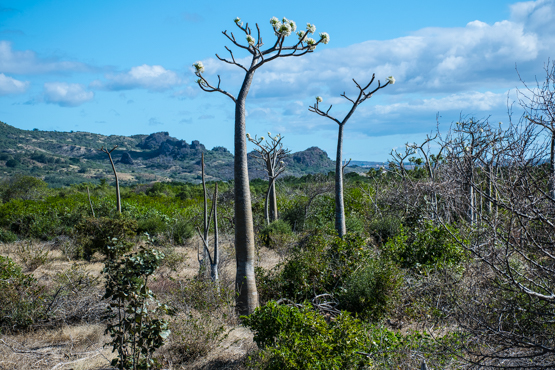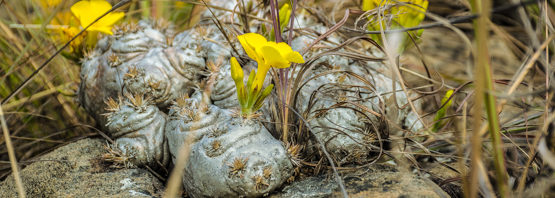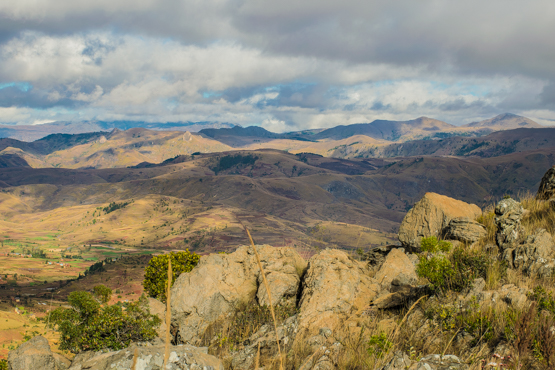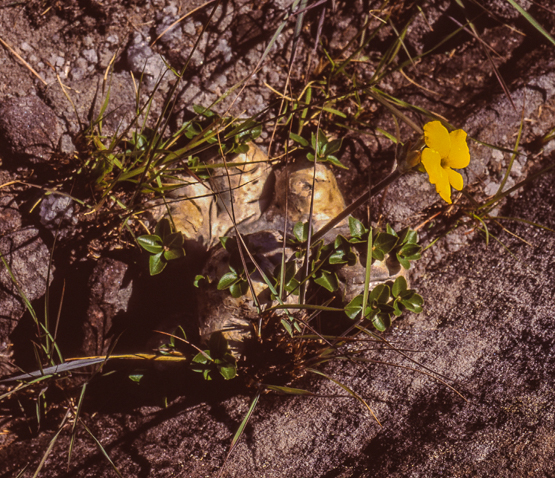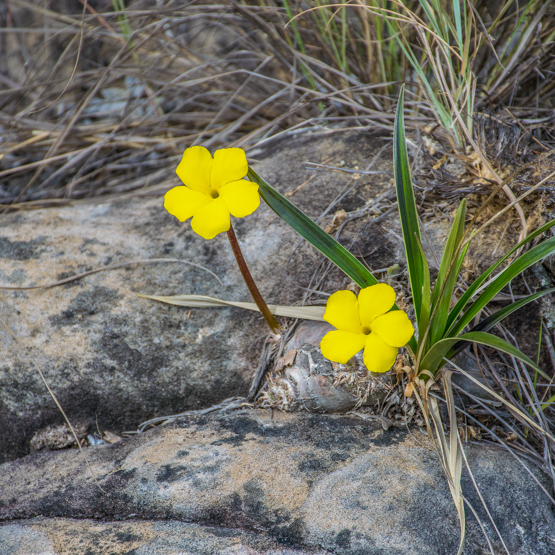In the dormant state, without leaves and flowers, this species is difficult to distinguish from P. densiflorum and P. rosulatum. They share the same habit: low, multi-branched shrubs up to 1.5 m in diameter and up to 1 m tall.
P. horombense is named after the Horombé plateau in the southern highlands of Madagascar, where it often occurs in great numbers on granite rocks.
The inflorescence has an erect peduncle of no less than 60 cm tall, with broadly cup-shaped flowers 1.7-2.3 cm in diameter.
According to Werner Rauh in his great book on the succulents of Madagascar, this is:
“the most beautiful Pachypodium species in cultivation”.
